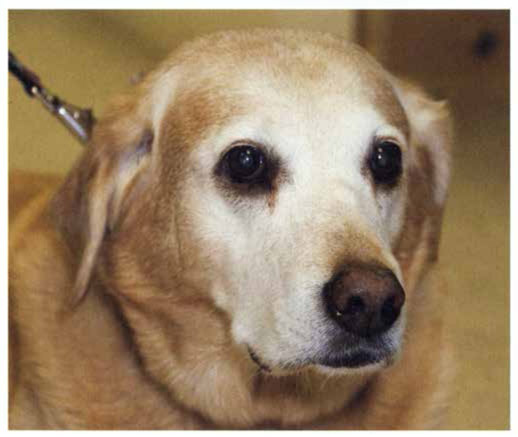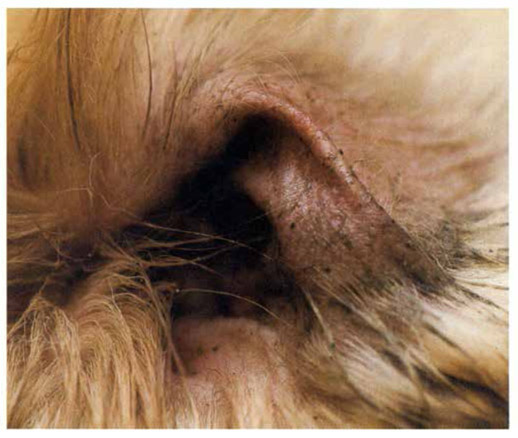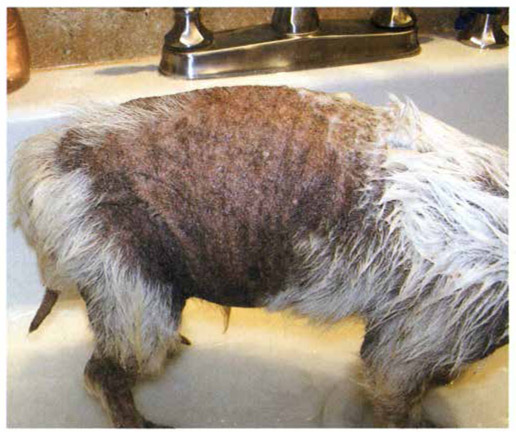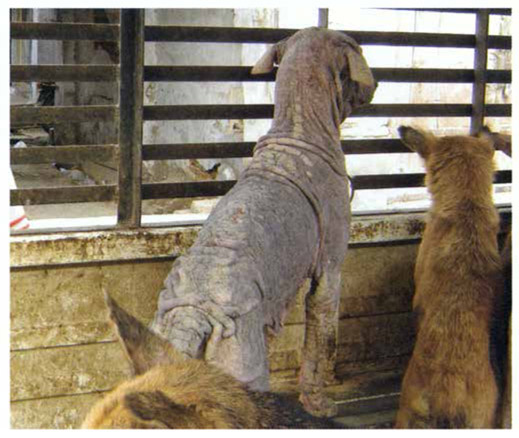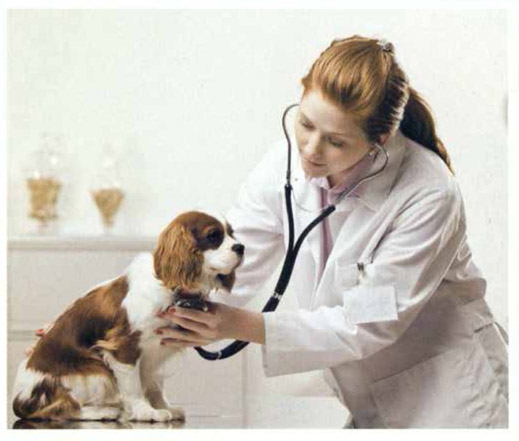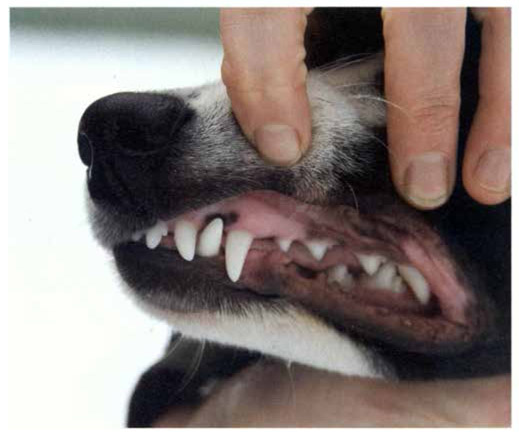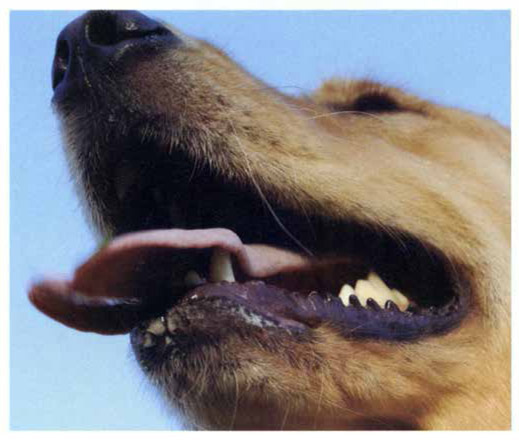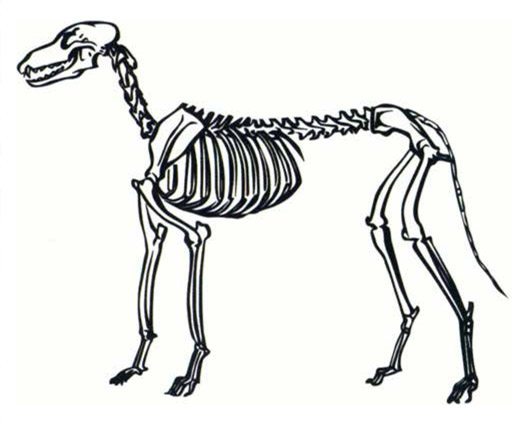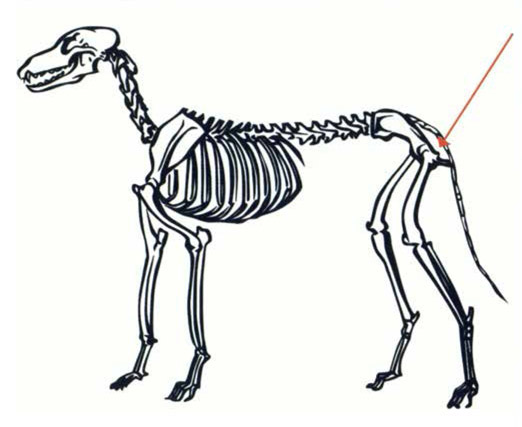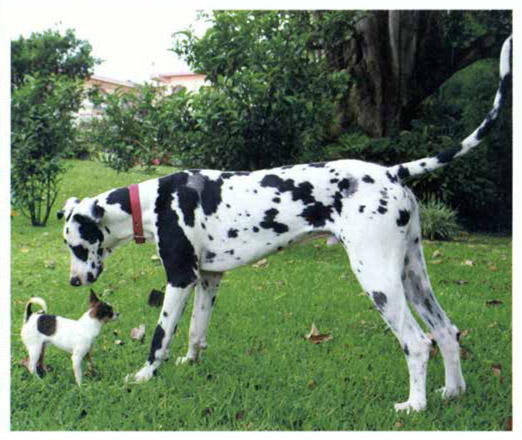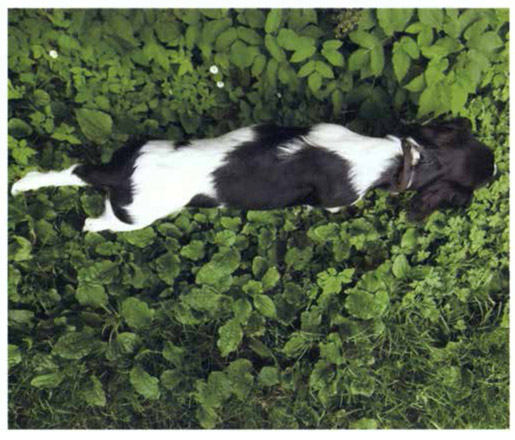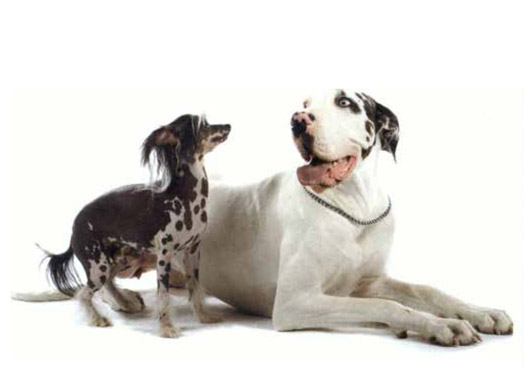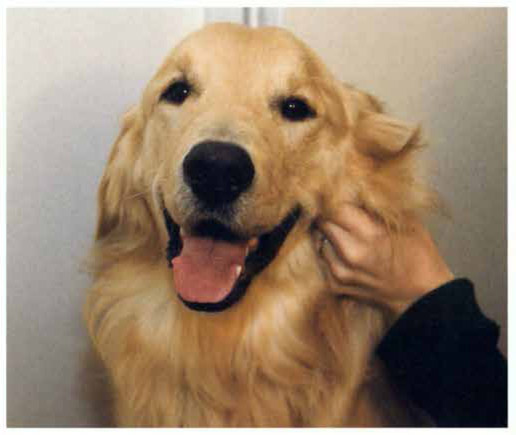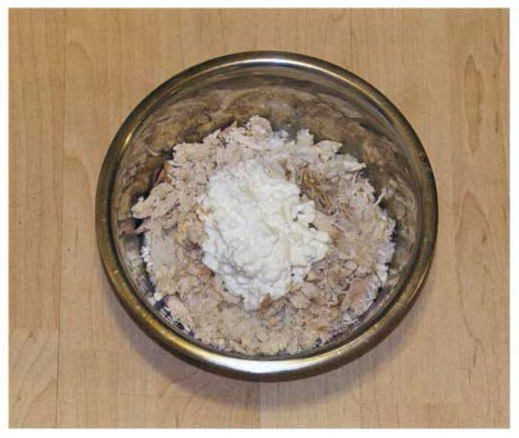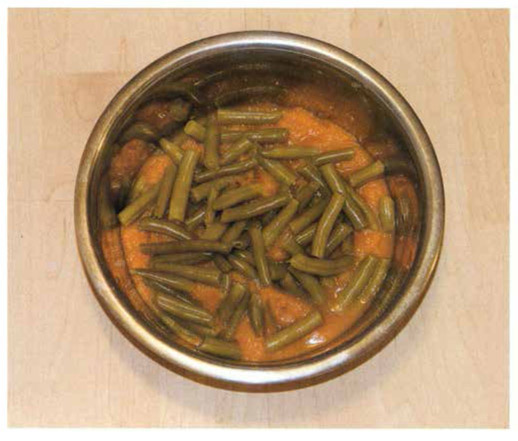ALLERGIES
How to deal with the allergy-prone dog
Dogs can be allergic to inhalants, foods, and fleas. The primary symptom of any canine allergy is itchy skin, sometimes with a visible rash. Food and inhalant allergies can also cause chronically itchy and infected ears. Flea bites cause an allergic dog to itch intensely and chew himself raw, usually around the hindquarters. Allergies can be frustrating to pinpoint, and there is no real cure. However, most allergies can be managed with a range of approaches.
Inhalant Allergies
- Inhalant allergies are more common than food allergies, and both types can manifest in itching or skin problems, including reddened, itchy feet.
- Treatment is two pronged: Identify and manage the allergen, and relieve the miserable dog’s symptoms.
- Some breeds, like bulldogs and bully breeds, retrievers, poodles, and some terriers, are more prone to allergies.
- A genetic predisposition for allergies is often passed on to puppies. Dogs with allergies should not be bred.
Inhalant pollen allergies are often seasonal, but if the dog is also allergic to house dust, he will have year-around symptoms. He may scratch and chew his body and feet and rub his face on the ground. Secondary to allergies are bacterial skin and ear infections. Make sure your vet does a culture on irritated skin so the proper medication can be prescribed. A dermatologist can isolate the allergens and mix a custom “cocktail” injection to lessen symptoms, although this can be expensive. Ask your vet about antihistamine dosages for your dog. Also consider supplementing with fish oil, a natural anti-inflammatory. Some medicated or oatmeal shampoos can help itchy skin. An air purifier in the house can help as well.
Allergic Responses
- Watery, red eyes and frequent ear or bladder infections are often indicators of underlying allergies.
- Allergic dogs can be susceptible to infections and illness because irritated and damaged skin has less protection from bacteria.
- You may never know precisely what the allergens are, but talk to your vet about managing symptoms.
- Too-frequent vaccinations can exacerbate allergy symptoms by triggering an immune response. Minimize vaccinations and consider titers instead.
Food allergies are usually in response to a meat or grain protein and sometimes to additives. Food allergies are less common than inhalant allergies and are not the same as intolerance, which tends to manifest in vomiting or diarrhea. Food allergies present very much like inhalant allergies. They are diagnosed by strict elimination diets, so the offending proteins can be removed from the diet.
Prevent Infections
- Regular ear cleaning to keep yeasty buildup in the ear canal can prevent infections.
- Although cranberries or cranberry extract capsules don’t cure bladder infections, they can prevent such infections from occurring in the first place.
- Good diet, medicated shampoo, and fish oil capsules can all help soothe itchy skin.
- Wash your dog’s bedding every week, keep the home vacuumed, and use nontoxic, natural cleaners.
Flea allergies are the easiest to prevent. Use prescription flea preventative regularly and keep your home flea free. Steroids can be prescribed for the short term in severe cases, but long-term use can suppress the immune system and result in serious unwanted side effects.
SKIN PROBLEMS
The skin is the largest organ, and health problems often manifest in skin and coat
Skin problems are common, and there are so many causes besides allergies that only a vet can diagnose them. Some skin conditions are linked to a malfunctioning thyroid, Cushings syndrome, or autoimmune disease; others are hereditary. With any stubborn skin problem, you can ask for a referral to a dermatologist for a second opinion because problems can be complicated to diagnose and treat.
Skin Problems
- Although many skin problems are fairly easy to diagnose, some can baffle even experienced vets.
- A plethora of conditions can manifest as itchy, discolored, reddened, or irritated skin.
- If your vet can’t find a remedy in a few tries, get a referral to a dermatologist.
- It could be cheaper and bring faster relief to your dog than unsuccessfully trying to treat a stubborn case.
Bacterial and fungal skin infections often are found in allergic dogs and can be stubborn, requiring long courses of medications. It is important that the vet does a skin scraping and culture so that the correct medications can be prescribed. Some infections can be resistant to common antibiotics. The ringworm fungus is contagious to humans. Other fungus, like yeast, usually infects damaged skin and is not as contagious. A dog who gets persistent skin infections may benefit from a change in diet, particularly to a meat-based or home-cooked diet or premium, grain-free commercial food. Coat supplements containing fsh oil can also help, as will regular bathing with antifungal shampoo.
Fungal Skin Problems
- Some fungal skin problems can be transmitted to other animals or people. Ringworm is a classic example.
- Fungal skin problems can present as crusty, red bumps but can also appear as red swollen skin or black or thickened, discolored skin. It can be similar in appearance to bacterial skin infections or mange, and a strong odor is associated with it.
- The only way to diagnose many skin problems is with a skin culture and biopsy.
- Be careful handling your dog and wash your hands afterward.
Several types of mites can be passed on to humans. Itching, patchy hair loss, and flaky skin can indicate mites. Some, like sarcoptic mites, are difficult to diagnose because they live burrowed deep in the hair follicle. They cause intense itching and can be misdiagnosed as allergic dermatitis.
Hot spots start as small skin irritations (like flea bites) that become open sores when the dog continuously licks them. They are treated by trimming surrounding fur and applying a drying agent and relieving the itching/licking cycle. Chronic hot spots can advance to acral lick granulomas, which are caused by incessant licking of one spot on the feet or legs. In either case exercise or distraction to redirect the dog’s attention from the sore will help.
Bacterial Infections
- For stubborn bacterial infections, a long-term course of antibiotics may be the only way to get them under control.
- It is common for dogs to improve while on medication, then have symptoms return as soon as the meds are stopped. In that case, look for underlying causes like allergies, glandular, or hormonal conditions.
- Talk to your vet about giving antihistamines to your dog to provide temporary relief from miserable itching. These usually work best for inhaled allergies, not for food allergies or infections.
DENTAL HEALTH
Poor dental health can lead to serious health problems, especially in older dogs
It is estimated that millions of dogs die earlier than necessary due to neglected teeth. If soft tartar is not removed regularly, it turns into hard, bacteria-laden calculus. The bacteria and calculus cause chronic gum inflammation, leading to infection, abscessed teeth, and mouth pain. They lodge in the liver, kidneys, and heart, where they accumulate, forming growths and damaging the organs. A dog’s immune system is put under constant stress fighting the bacterial overload, and the dog is more susceptible to any illness.
Teething
- Periodically check a puppy’s mouth during teething. If a baby tooth is not dislodged when the adult tooth comes in, call your vet.
- Small dogs are most prone to retaining baby teeth and poor dentition in general.
- Puppies are born toothless. Twenty-eight puppy teeth are formed by birth and will cut through the gums by about five weeks of age.
- Adult dogs have forty-two teeth: twenty in the upper jaw and twenty-two in the lower.
The good news: Removing all the calculus is a fairly simple procedure. The dog is sedated, and calculus is scraped and ground off, and the teeth are polished. The vet will be able to carefully inspect the teeth for cracks and exposed roots and can extract teeth that are beyond repair. (Dogs can chew and eat quite well with missing teeth.) The dog may be put on a course of antibiotics following a cleaning to counteract the bacteria released during the procedure.
Dental Exams
- Healthy teeth are white, with smooth, pink gums.
- If your dog is ever scheduled for surgery, ask your vet if she needs a dental check-up and cleaning at the same time.
- Many conditions, like loose or cracked teeth, are not always easy to see. With your dog sedated, the vet can do a thorough exam.
- Having a dental exam and cleaning at the same time as another procedure can save you considerable money.
Bad breath is the first sign of dental disease, and if you can see brown deposits on the teeth, that is the cause. Infected gums will be reddened or puffy along the gum line. A dog will indicate a painful mouth by drooling, refusing to eat, or eating slowly. If teeth look worse on one side of the mouth, this indicates he’s chewing only on the other side because it hurts.
Some dogs can reach their middle years with great teeth; others will have calculus very early in life. Small dogs have a predisposition to dental disease. It’s best to be proactive and maintain dental health to avoid more serious problems.
JOINT PROBLEMS
You can help your dog stay strong and flexible
Joint pain is indicated by stiffness, lameness, or an abnormal gait. Hip and elbow dysplasia usually present in younger dogs while their bones are still growing. Rear lameness or “bunny hopping” can indicate hip dysplasia, diagnosed by manipulation and X-rays. Front lameness can be elbow dysplasia, which is a little more complex and tricky to diagnose. Keep a young limping dog confined and calm. Ligaments, muscles, and tendons can be pulled or torn during exercise. Often rest and anti-inflammatory medication heal the injury. If the lameness persists for more than a few days, get a veterinary opinion. If surgery is suggested, always get a second opinion from an orthopedist.
Bones in a Dog
- Dogs have about 320 bones—humans have about 206. The number of bones depends on whether the dog has a tail and how long it is and whether the dog has dewclaws.
- A growing pup reaches his full height before his body fills out.
- The larger the dog, the slower he grows. Although exercise is important, avoid overexercising and encouraging jumping until the pup has done growing so as not to stress or damage growing bones.
Mild dysplasia may not require surgery. Keeping a dog very lean is critically important for any joint problems. Exercise as tolerated, especially swimming, builds muscle that protects and compensates for weak joints. Supplements and nutraceuticals like glucosamine/chrondritin, MSM, and fish oil may be very helpful in lubricating joints and reducing inflammation. Some studies have shown that sterilization while bones are still growing, particularly in males, may increase the risk of joint injury and abnormality by reducing the testosterone that develops bone density. Dysplasia is often hereditary, so choosing puppies from tested parents is important.
Elbow and Hip Dysplasia
- Elbow and hip dysplasia is unfortunately common, particularly in larger dogs. Both mixed breeds and purebreds alike can be affected.
- Males and females are equally affected by hip dysplasia, but more males have dysplastic elbows.
- Stiffness, hopping, and abnormal gait should be checked. Dysplasia is usually first noticed in growing pups under one year old.
- Orthopedist will have the most up-to-date information on new medications and procedures; canine orthopedics is a fast-growing field.
Luxating patellas, or slipping knee joints, are painful and can affect any dog, although toy breeds are more susceptible. If the condition is mild, it can be managed, but severe cases can be fixed surgically.
Arthritis is common in older dogs and can affect the spine or any joint. As with dysplasia, there is plenty you can do to ease pain. Acupuncture and chiropractic care can bring great relief, and many pain-control medications can be used in conjunction with supplements. Be sure your dog has a soft, warm place to sleep.
OBESITY
Help your dog maintain a healthy weight for a long, healthy life
Overweight dogs are so common that many people now think a fit dog looks underweight. Pudgy dogs have become the norm, which is unfortunate because excess weight significantly affects health, longevity, and enjoyment in life. An overweight dog will have a heavy fat layer over the ribs. Regardless of body type, you should be able to feel every single rib quite easily. The dog should have a trim waist and tummy. Hip bones and spine should not be prominent, but you should be able to feel them. Some dog fanciers bemoan the acceptance of hefty dogs like Labradors and rottweilers in the show ring and make a distinction between “working” and “show” condition. Our pet dogs should be in “working” condition, lean and fit.
A Fit Dog: Ribs
- You should be able to either see or feel all ribs.
- Despite popular opinion, slightly visible ribs do not mean a dog is underweight.
- People with fit, athletic dogs complain that other people often remark that their dogs are too thin. Many people have become so accustomed to seeing pudgy dogs that they consider this condition normal.
- A dog’s ribs should feel like the skin covering the back of a person’s hand: easily felt, with a layer of skin covering them.
Some dogs can seemingly gain weight just by looking at food; others burn through calories, feeding suggestions for commercial dog foods are simply rough guides. Although some dogs self-regulate and can be free fed, most don’t, so it’s best to have measured feeding.
A Fit Dog: Waist
- A fit dog has a defined waist when seen both from the top and side.
- Feel a long-haired dog. You should be able to detect a well-defined waist, no matter what the breed.
- For most breeds, if you can grab a handful of fat at the side of the waist, the dog is overweight.
- Breeds like the stocky English bulldog or wrinkly shar-pei do have naturally looser skin, and ribs may not be as easy to detect.
Weight-control dry food works for some dogs if fed as directed. However, it is not designed for long-term use because it’s high in fiber and carbohydrates and lower in fat and protein. A better option to take off moderate amounts of weight is to simply feed a little less of your dog’s regular quality diet. There really isn’t a need to let him fill up on low-nutrition bulk, but adding canned green beans and a little canned pumpkin to his reduced meals is a healthy option. Curtail treats or use low-fat ones like fat-free popcorn or carrot or string cheese pieces.
Other Diseases
- The great Dane and Chinese crested, with their short coats (or no coat at all!), are easier to monitor than fluffy dogs because you can more easily see their condition.
- Although breed types can be either naturally slim or bulky, there shouldn’t be rolls of fat on any part of the body.
- Diabetes is on the rise in dogs because of the obesity epidemic. Diabetes is associated with chronic pancreatitis, which is also becoming more common.
Don’t forget exercise. As little as fifteen extra minutes a day will help. Expect weight loss to be slow because dogs don’t naturally drop weight quickly.
Diet Control
- Cook and add any of the following to a reduced portion of his regular food: green beans, pumpkin, any squash, white rice, or sweet potatoes. Mix a little canned fish if he won’t eat the food otherwise.
- Cutting too much fat for too long not only leads to poor skin and coat but also can lead to poor overall health. Dogs need fat in their diets.
- Increase exercise. Even a little bit every day will help.
GASTROINTESTINAL ISSUES
How to deal with vomiting and diarrhea
Vomiting and diarrhea seem to be popular canine pastimes, usually on carpeting. An isolated bout of either is nothing to worry about if all else is normal, but it could indicate a more serious problem if frequent. Extreme listlessness, abnormal pain, or weakness is a medical emergency. Any diarrhea or vomiting that lasts more than twenty-four hours needs veterinary attention.

Some vomiting is caused by irritation of the stomach. Some dogs vomit small amounts of yellowish fluid at night. This is probably bile irritating an empty stomach, and if the dog is otherwise healthy, a solution is a later dinner or bedtime snack. Other dogs vomit when they are stressed or have eaten too fast. Try behavioral management and techniques like putting a very large rock into the food bowl to slow eating. Vomiting can also be a symptom of cancers, pancreatitis, parasites, and inflammatory bowel disease (IBD). Have your dog vet checked and ask about home solutions like a diet change, digestive enzymes, probiotics, or over-the-counter medications.
Soothing an Upset Stomach
- For a dog who has a mildly upset tummy not warranting veterinary attention, feed small meals of boiled white rice and cooked lean meat.
- If the upset isn’t resolved in twenty-four hours or is a frequent occurrence, collect a fresh stool sample and your dog, and go to the vet. Your vet can check for parasites and abnormal bacteria.
- Intestinal parasites are a common cause of diarrhea and sometimes vomiting. There are many types of parasites, some too small to see.
Most diarrhea is caused by irritation of the intestines. There are too many causes to list here, but isolated incidences are usually caused by eating something unsuitable. Diarrhea may be caused by parasites or a viral or bacterial infection. Chronic diarrhea can indicate colitis, IBD, or pancreatitis. Always take a stool sample to the vet to help with the diagnosis. Ask her about remedies like a temporary diet of cooked rice and meat, spoonfuls of pumpkin added to meals, probiotics, and herbs like slippery elm.
Soothing the Digestive System
- A spoonful of plain canned pumpkin (a teaspoon for a small dog, a heaping tablespoon for a large dog) added to the food can help with diarrhea by absorbing excess water from the colon.
- Digestive enzymes may be helpful for dogs who frequently have gastrointestinal problems, especially vomiting. They can’t hurt and will help food get digested in the stomach.
- Probiotics help repopulate the intestine with beneficial bacteria. Again, they cannot hurt and may help, especially with diarrhea.
Chronic diarrhea, and to a lesser extent vomiting, can be dangerously dehydrating to young puppies and toy dogs. If skin pinched between the shoulder blades doesn’t spring back immediately, the dog is dehydrated. You can offer ice cubes or replacement electrolyte solutions, but get to a vet as soon as possible; this degree of dehydration is life-threatening.

